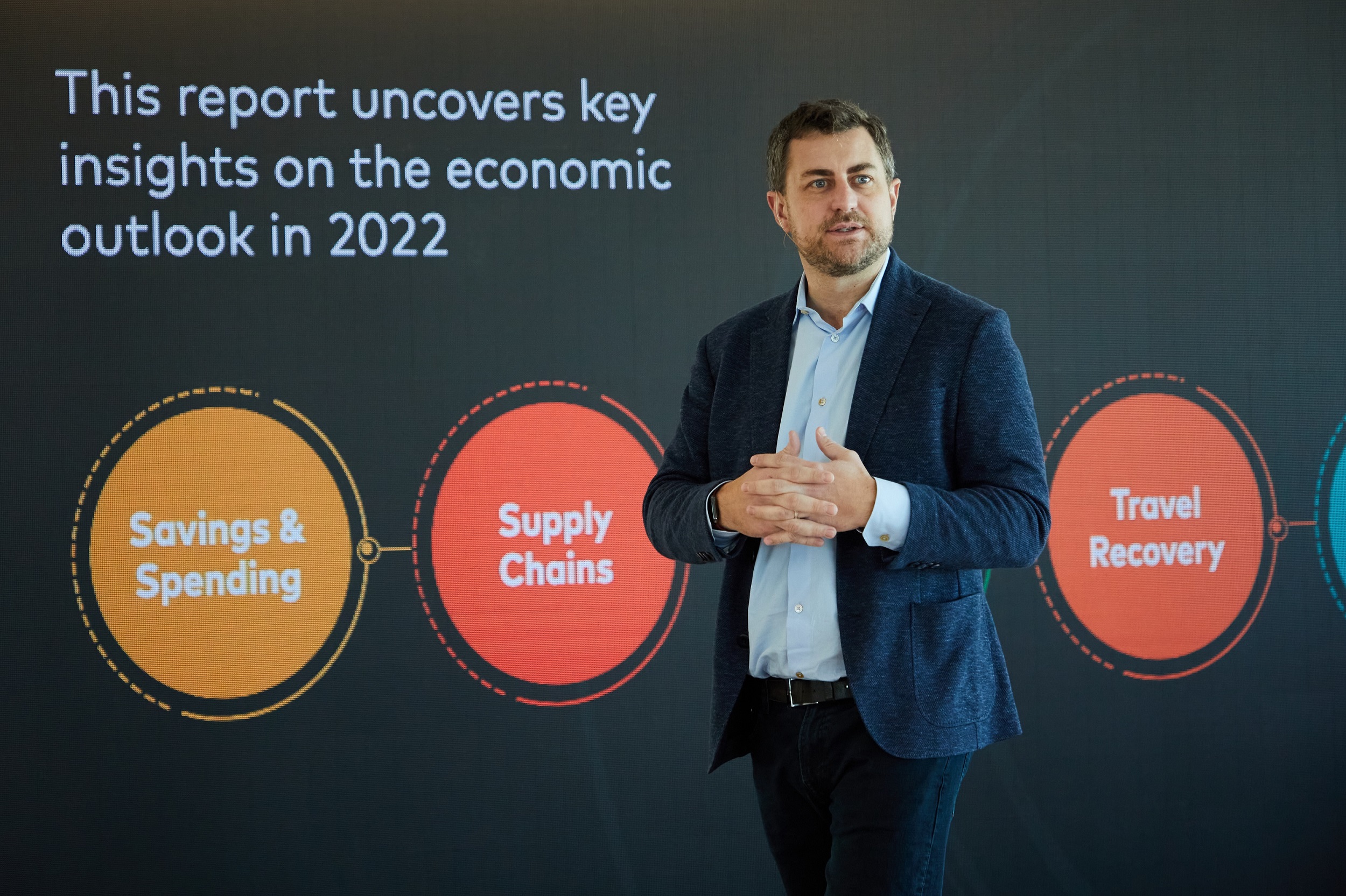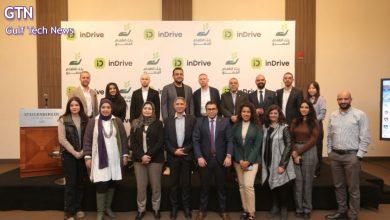Mastercard Economics Institute: 2022 Economic Outlook Defined by Digital Resilience and a Return to the ‘Experience Economy’

Riyadh, Saudi Arabia; gulftech: Ahead of the pandemic’s second year milestone, the Mastercard Economics Institute released today Economy 2022, a global outlook for the coming year based on critical trends as seen through the lens of the consumer.
The report reveals how five fundamental factors — savings and spending, supply chains, digital acceleration, global travel, and a growing list of economic risks — will continue to shape the global economy.
Our key findings include:
Savings & Spending*: Consumer spending of built-up savings could contribute an additional three percentage points to global GDP growth in 2022. Household saving rates nearly doubled in 2021. How quickly or slowly consumers spend from their savings will have a ripple effect on the global economy.
Supply Chains: A record-breaking 27-year rewind in the household spending shift from goods to services rotates back – already six percentage points below the peak. The pandemic sparked spending growth on goods from 39% to around 47% at its peak, roiling the services economy while burdening supply chains. With cupboards bursting, we expect the balance to normalize in 2022 as borders open and services become more accessible and desirable again.
Digital: 20% of the digital shift in retail stays put – reshaping how and what consumers buy. E-commerce subscriptions gained traction in 2021 as nearly 88% of countries across 32 markets saw a surge in subscription services compared to the previous year. Notably, car companies, virtual workout partners, bike rentals and pet services are among a slew of businesses benefitting from this model.
In Saudi Arabia, retail subscription share of total spend increased by a factor of 1.3x from 2020 to 2021.
Travel: Leisure travel recovery continues as international travel opens up, with medium- and long-haul flights to gain ground in 2022. The return to travel in 2021 was on full display on our roadways and in airports, but continued growth hinges on containing virus variants that drive travel bans. We saw a swift rebound in domestic and short-haul international travel (under 1,000 km), medium-haul travel (under 2,900 km) lifted by fewer restrictions, while long-haul travel trails behind.
In Saudi Arabia, domestic trips are around 66% of pre-pandemic levels, with international short, medium and long-haul trips at 63% 33%, and 56%, respectively.
Risks: Risks remain with the potential to disrupt the global economy. New COVID variants like Omicron pose the biggest immediate risk, but we’re keeping an eye on nearly a dozen additional risks that have the potential to derail recovery, including a sharp recalibration of housing prices that have appreciated 66% over the past two years, a surge in oil prices, fiscal cliffs in advanced economies, and international tariff wars.
“The past year was not the return to normal that many yearned for, but collectively, we have made tremendous progress,” said Bricklin Dwyer, Mastercard chief economist and head of the Mastercard Economics Institute. “Globally, economic growth, vaccine advances, and digital transformations that have made businesses large and small more resilient, continue to shape the future. It is against this backdrop that we anticipate consumer demand — and spending power — to grow and the experience economy to reemerge next year.”
*Methodology
The Mastercard Economics Institute draws on aggregated and anonymized sales activity in the Mastercard network among other sources to develop a measure of the quantity and prices of goods vs services consumed for economies throughout the world.
You can view the full Economy 2022 outlook here. This is the third outlook report from the Economics Institute; other reports can be found here.





